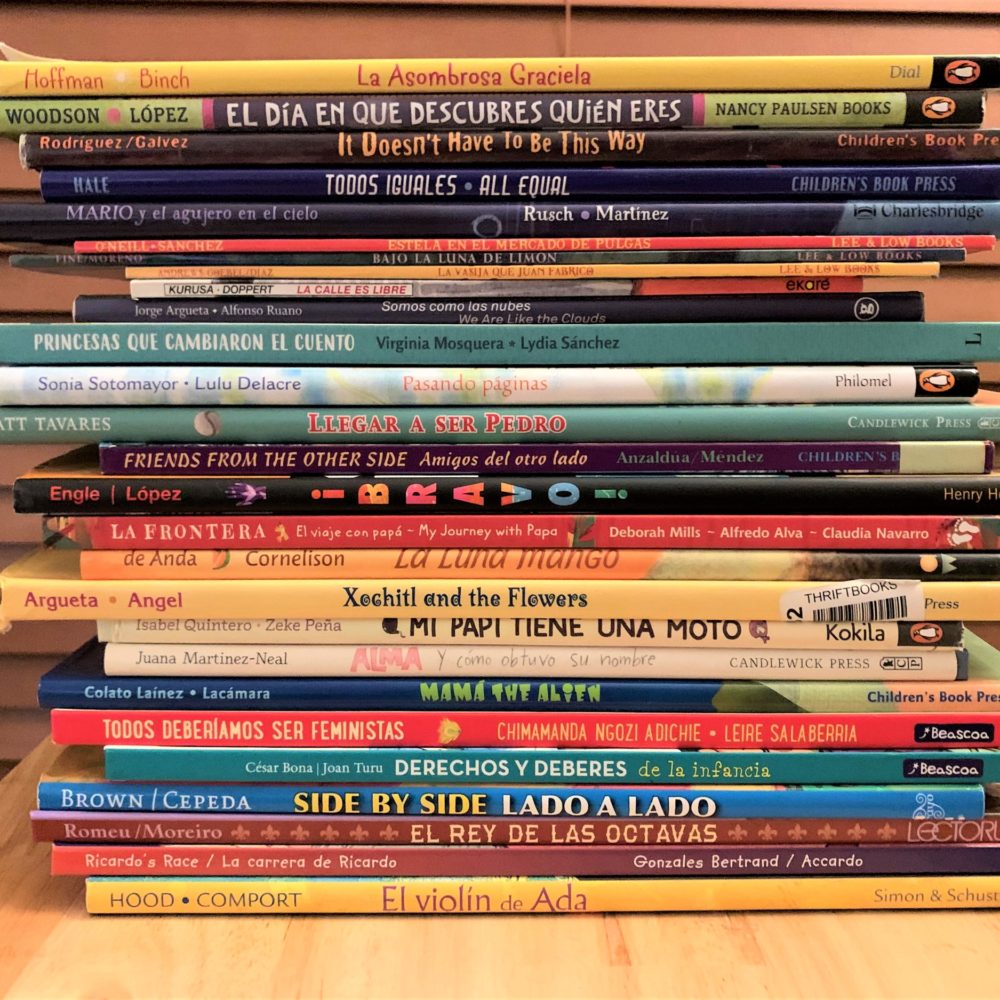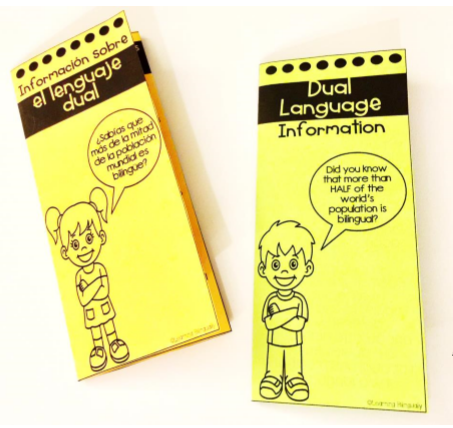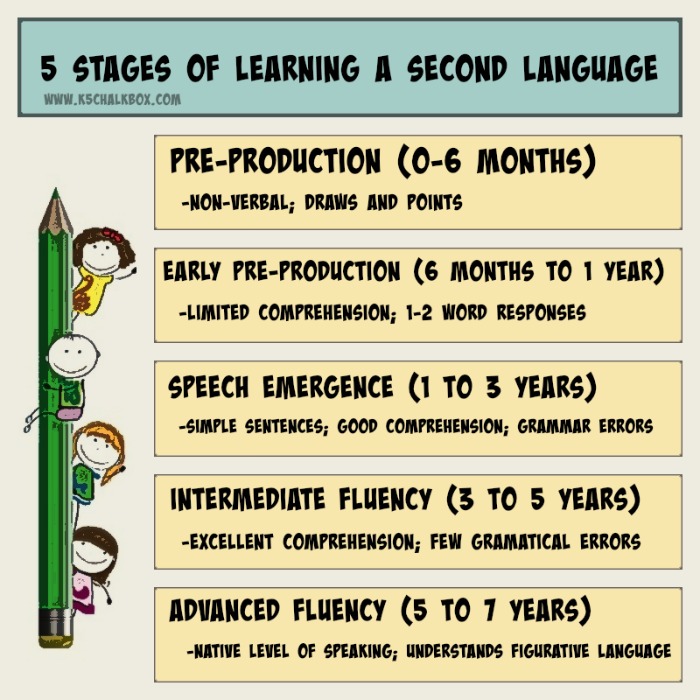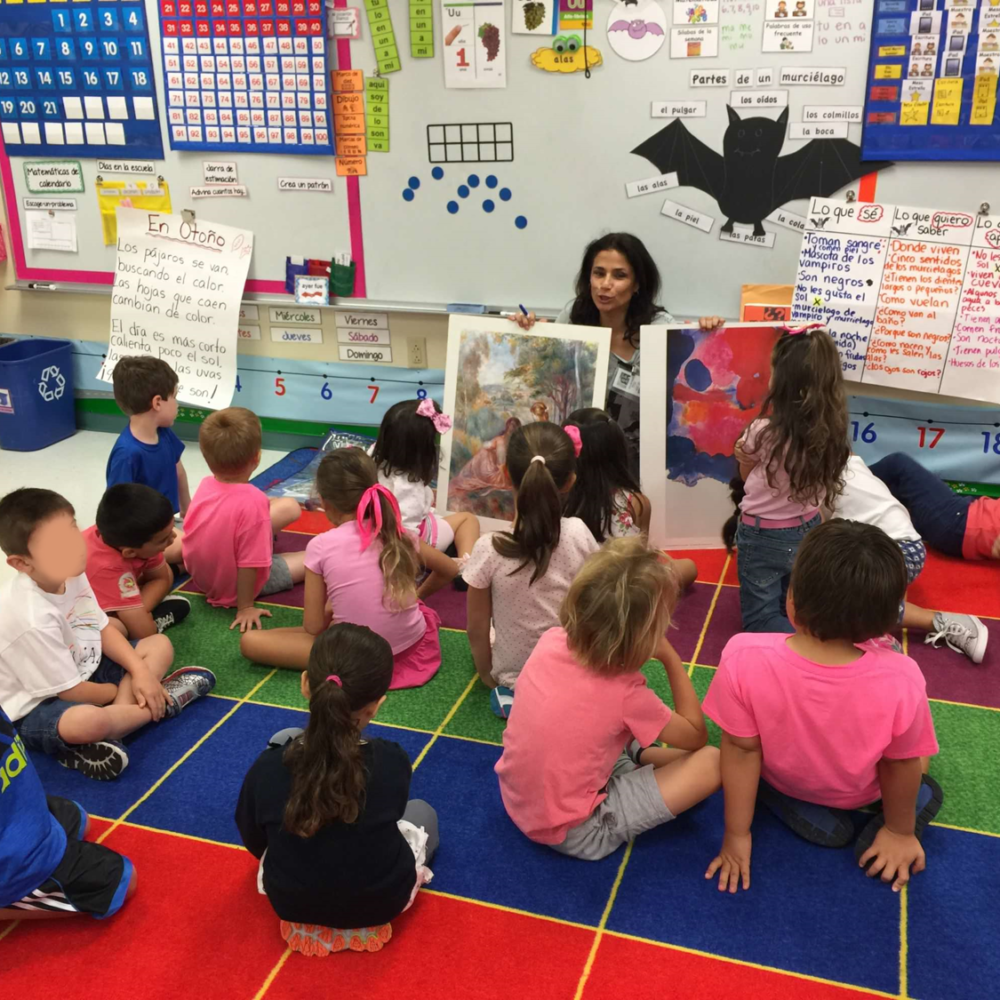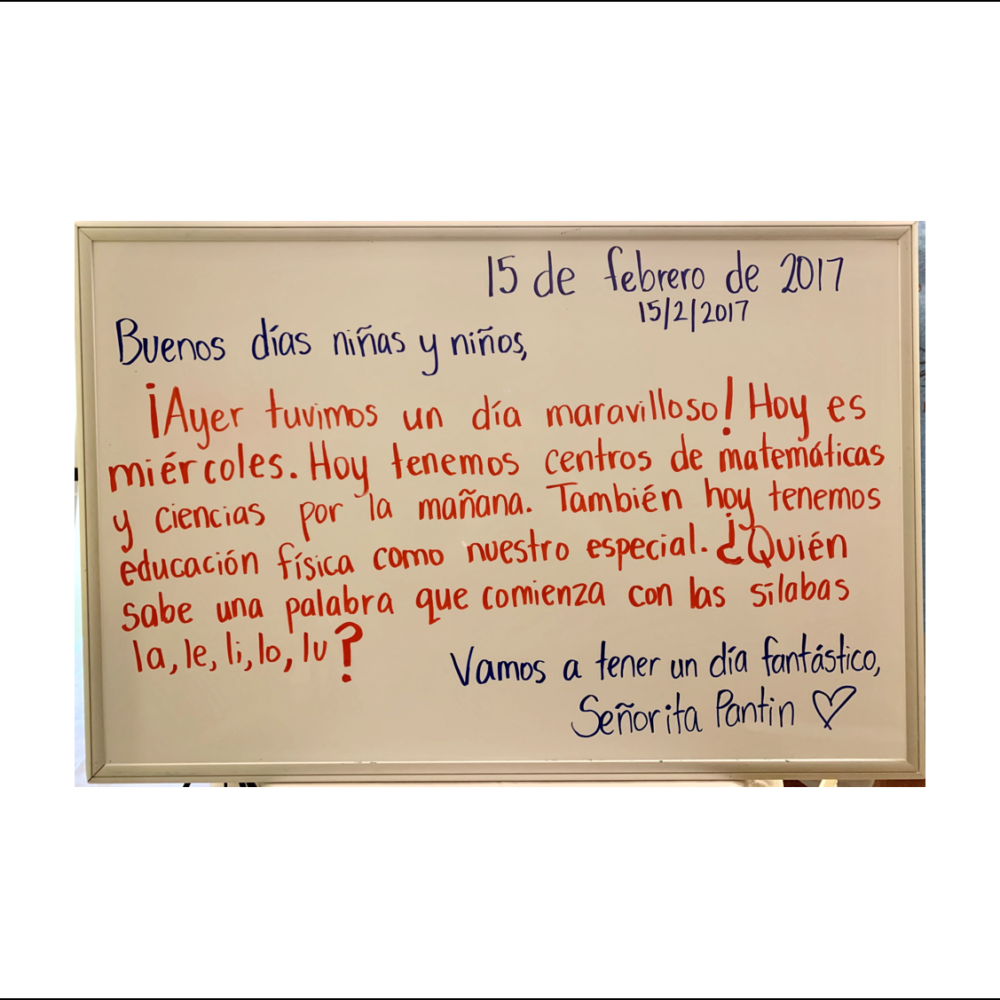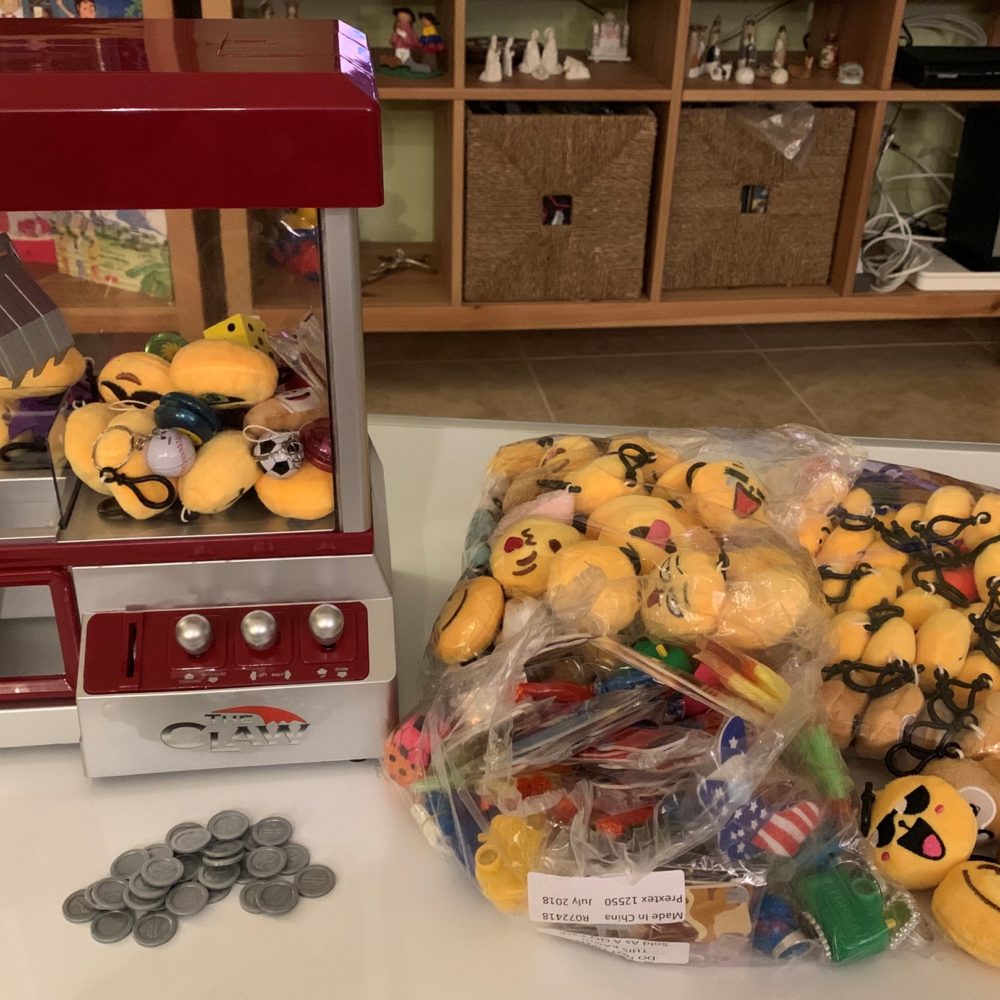
One of the most difficult teaching aspects of being an educator in a Dual Language program is encouraging our students from the very littlest ones to the older ones to stay in the target language when they are on the Spanish side. Something to be cognizant of is that we must remember to be positive and encouraging when it comes to the language acquisition process. Stephen Krashen, a prominent researcher in linguistics, describes the idea of the Affective Filter Hypothesis, which indicates that a number of ‘affective (or social-emotional) variables’ including, self-confidence, motivation and anxiety affect second language acquisition.
Our goal as dual language educators needs to be to create an environment where students feel comfortable, excited, engaged and safe to take risks in order to produce and engage with the target language.
Here are 15 tips to implement in the classroom that can help your students be engaged in and stay in the target language. Many of these tips can be used in conjunction with others from the list:
Tip #1: Set clear expectations – It’s important to establish a target language routine from Day 1 – this also means that you as the teacher are using the TL from Day 1. It’s important that there is clear accountability in our classrooms.
Tip #2: Utilize sentence stems – We need to make sure if we are expecting our students to speak in the target language, we are giving students the language they NEED to communicate. Providing sentence stems for frequently used questions/answers in the classroom, and for their writing and reading responses will elevate the level of comfort students feel using the target language.
Tip #3: Interactive print-rich environment – This means that we aren’t just labeling our environment, but we are creating bulletins and using our board and wall space with interactive word walls, academic language walls, frequently used phrases
Tip #4: Have students create a language journal at the beginning of the year – this can be their own journal of frequently used phrases, or if they don’t know how to say something in the TL, and you show them how, then direct them to write it down in their journal
Tip #5: Use a visual cue to remind students to stay in the Target language – This can be done whole-group or individualized signals as well – your visual cue can be as generic as a holding up a certain # of fingers, or more related to your classroom in the form of an image, picture or physical cue.
Tip #6: Conduct frequent comprehension checks – again this can be done using a visual cue (thumbs up/sideways/down). This allows you to be checking in on your students during your lessons and jot down or address then any confusion.
Tip #7: Incoporating Flipgrid into the classroom – Flipgrid is great to pose questions that allow students to make connections to their own lives, what they’re learning and so much more. As a teacher you can create a teacher account and then create a GRID for each of your classes if you teach different groups of students, and then create and pose questions or activities for your students to do and then they record a video answering. This is great for the students because they can prepare what they’re going to say beforehand and this then reduces the anxiety of being put on the spot to speak in the target language. Rather, this tool provides a digital platform for students to engage with the language, and the other peers can view each other’s videos too, and this can serve for students to get ideas from their peers who might serve as “language models” for them.
Tip #8: Use individualized incentives charts – With this, each student gets their own small incentive chart with a certain number of stars or smileys and as you hear them using the TL during the day, they get a check or stamp on a star or smiley. When the have their whole card stamped, they get some type of reward. Maybe you have reward coupons or actual prizes. You can use a claw machine for students to try winning a prize or have a treasure box for students to choose their prize after completing their chart. After they have chosen their prize or incentive, then they get a new chart!
Tip #9: Incorporate a whole class reward system -You can have a class jar of pom poms or pebbles or anything and as you hear the TL throughout the classroom you place however many pom poms inside the jar and as they reach certain levels of the jar, they get class incentives.
Tip #10: Incorporate games that encourage language fluency (look at your standards and think, How can we use a game to practice this skill that will have my students talking in the target language? Some great games to adapt for your classroom are: Hedbanz, Pie Face, Guess Who and Jenga.
Tip #11: Secret student method – tell your students you are going to pick a secret student everyday and if that secret student has been using the TL during the day, then they will get a reward at the end of the day. This is a great way to keep your students excitement level high as they will wonder who the student is.
Tip #12: Using Collaborative pairings – This means that you are strategically pairing students to work with another student throughout the day on different activities. For Dual language classrooms, this means pairing a Spanish-dominant child with an English-dominant child so they are each helping each other.
Tip #13: Use technology to give students points when they use the target language – Just like the incentive chart, this method is supposed to be for praising students when they use the target language and it is not meant to be used as punishment by taking points away. This method can be utilized through different apps like Class Dojo, Seasaw.
Tip #14: Use a Password/question/answer system to enter the classroom or go from center to center or however you want to incorporate it – When I taught Kindergarten I had a weekly Password posted outside my classroom, which usually was an important word we had learned and practiced the week before, to keep reviewing it. Students had to say this ‘password’ every time they entered the classroom. This allowed my students to not only practice this vocabulary throughout the day but also begin their entrance in the classroom by feeling a sense of confidence.
Tip #15: Try to incorporate interpersonal speaking activities in your day – these can be short structured opportunities for students to engage in the language. For example, creating opportunities for your students to practice conversations on topics they are learning in class or having a set up where students talk to 4-5 students for about 4-5 minutes each on specific topics you have pre-planned. For example, if your students are learning about text features, then your five topics they talk about can be five different types of text features. The students would talk about one type of text features to one peer, then after the timer goes off, they move and talk to the next peer about the next type of text features.
Remember to utilize comprehensible input, because if students’ affective filter is low, then they will be more apt to risk taking in our classrooms. It’s also important to remember that the language acquisition process is not static and linear, it is can be messy and bumpy and the challenges can sometimes feel insurmountable but you are not alone! There are many strategies we can all implement to truly engage and excite our students to use the target language in our classrooms!
